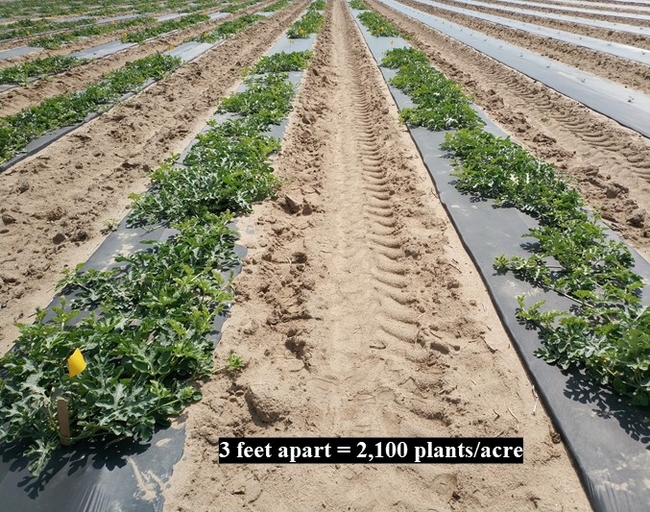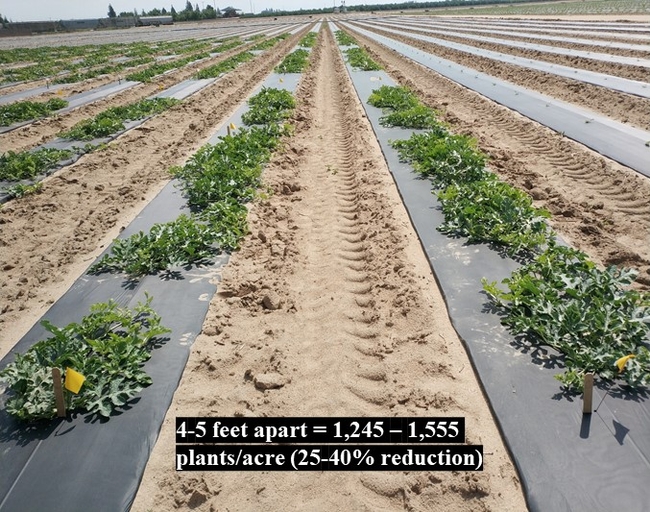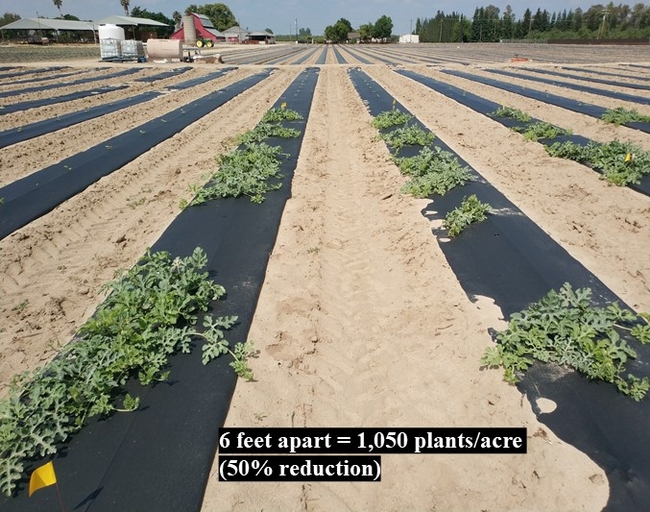UC ANR research on watermelon grafting helps growers produce 15-20% more watermelons while using 25-40% fewer plants than the traditional system under the same amount of water and fertilizers, contributing to economic prosperity for the agricultural sector.
The Issue
As the statewide water scarcity and rising inflation hit the California agriculture, food production with reduced inputs while maintaining productivity and controlling production cost heighten the necessity of using environmentally-sustainable farming practices. For watermelon growers, grafting, a thousand-year-old practice, has been recognized as a such practice to tackle the problems according to scientific literature. However, the adoption on grafting has been low among California watermelon growers despite the benefits being well-known. Therefore, strengthening growers' confidence with this ancient production tool is crucial.
How UC Delivers
Extensive field visits to watermelon growers, nursery, and seed industries were conducted to understand the barrier of adopting watermelon grafting starting in 2018. Results from the interviews indicated that the increase of production cost was the biggest concern when growers considered watermelon grafting. Further investigations showed that growers pay 2.5 to 4 times more per acre for producing grafted transplants compared to non-grafted watermelons.
In addition to yielding more fruit, grafted fields should also use fewer plants to compensate for the higher cost. Since 2019, field experiments were conducted in the San Joaquin Valley to test the horticultural and economic potential of growing grafted watermelons in wider spacings. A total of eight rootstocks and four scions were grafted into 32 combinations, which were planted into the regular three feet, and wider spacings of four to five and six feet apart. The results indicated that grafted watermelons planted with the four to five feet in-row spacing balanced the best among yield enhancement, fruit quality, and control of cost. Study progress and findings were shared periodically with the cooperative growers and discussed with the watermelon industry. The information was also reported in extension articles and at various extension and scientific conferences.
The Impact
With the four to five feet in-row spacing adopted widely, the cost for grafted transplants was reduced up to $800 per acre. Furthermore, stronger confidence with grafting has led to the increase of planted acreage of grafted watermelons from less than 250 acres in 2018 to over 1,500 acres in 2021. According to the field observations, growers reported that, on average, their successfully grafted fields produced 15-20% more watermelons than non-grafted fields while using up to 40% fewer plants and the same amount of water and fertilizers. For local greenhouses, customer orders of grafted watermelon transplants increased more than 10 times in 2022 compared to 2018. These savings and increases in revenue demonstrate UC ANR's commitment to its public value of promoting economic prosperity.


